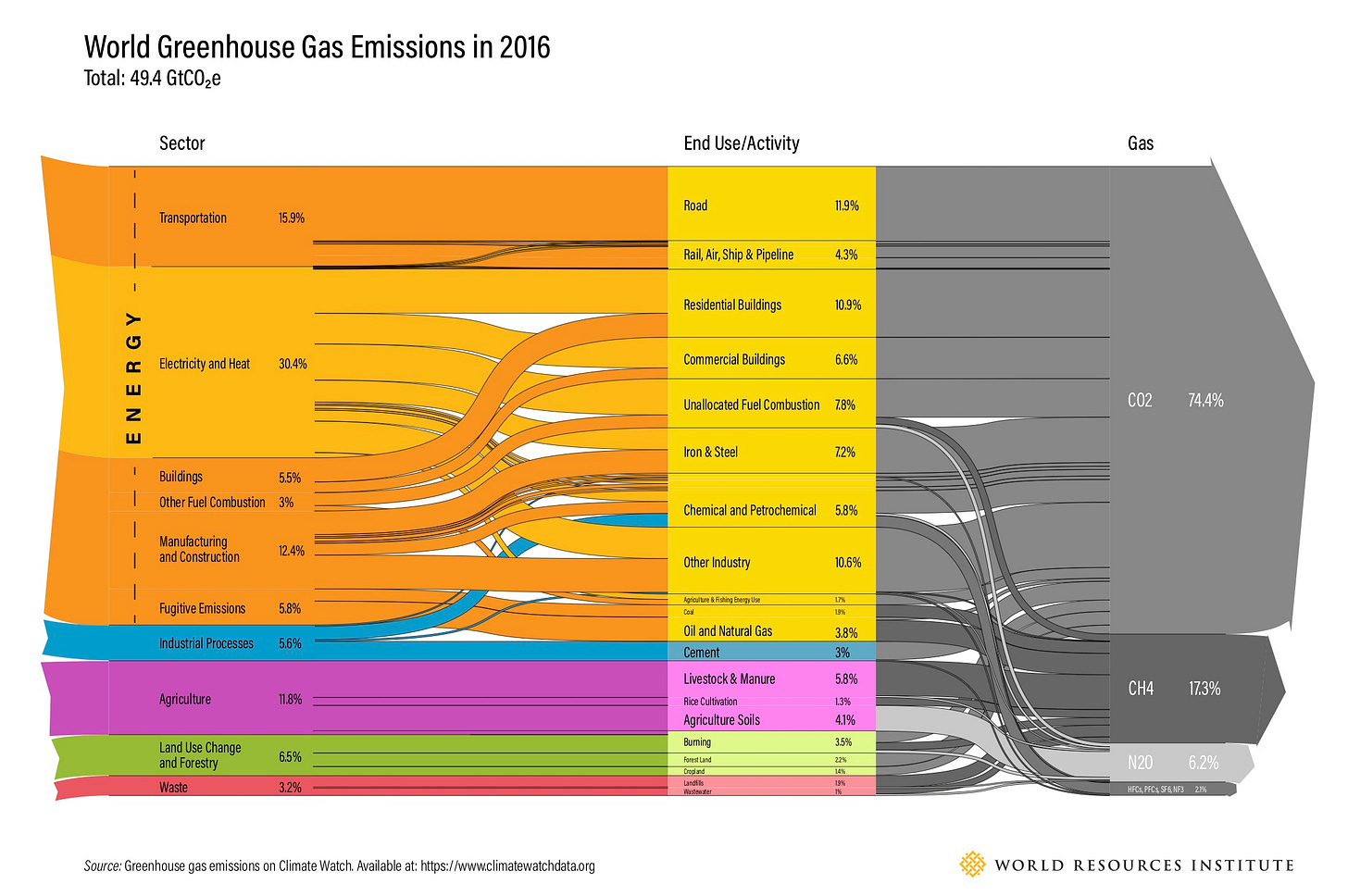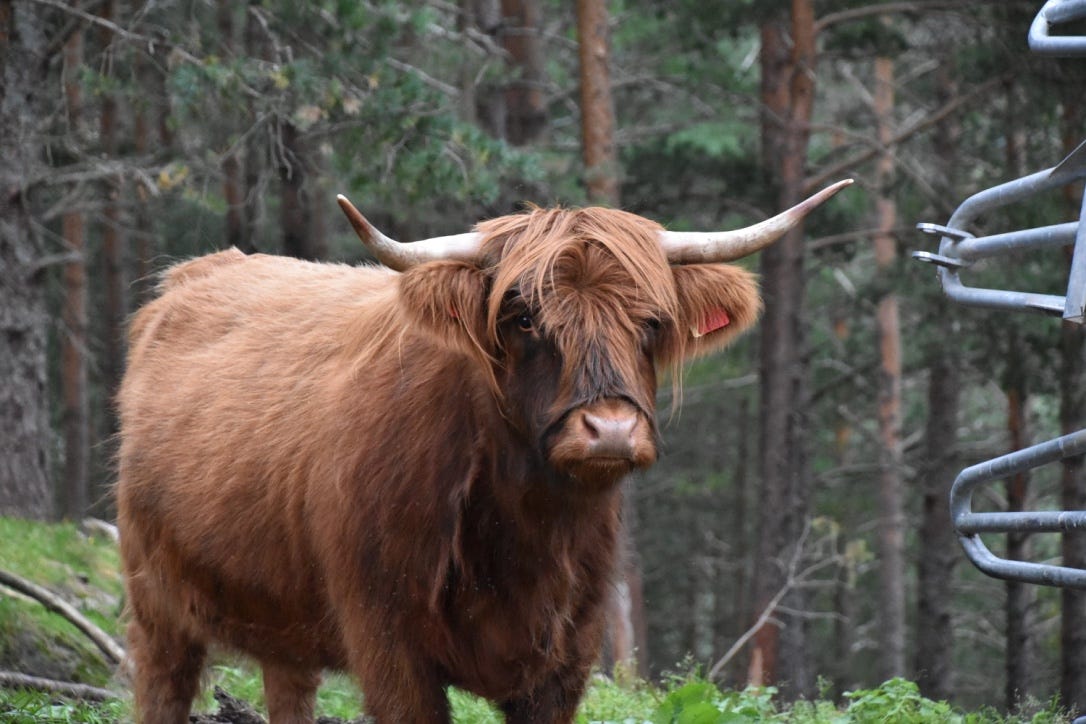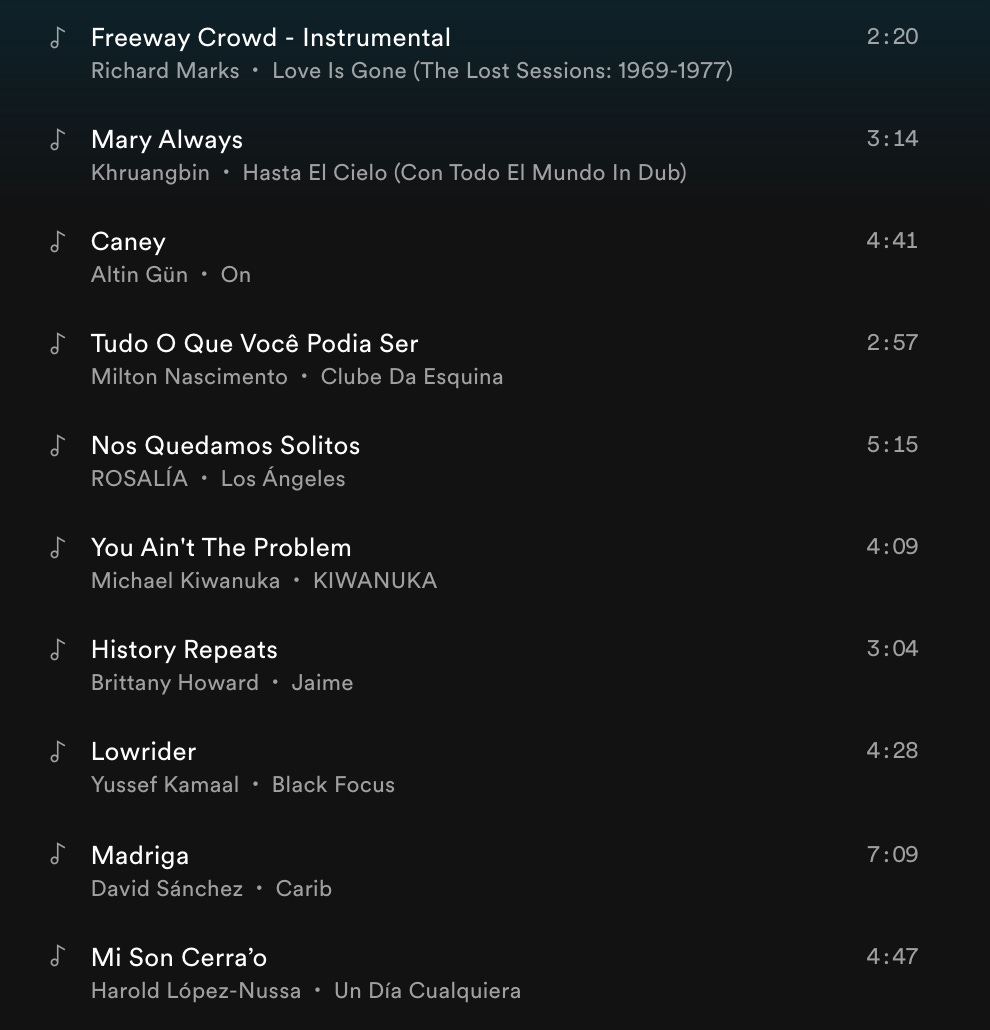Break it down
The parts that make up the carbon emissions whole // Side B: Them in the know been breakin' things down for a loooong time.
"If you procrastinate when faced with a big difficult problem... break the problem into parts, and handle one part at a time." - Robert Collier (1885 - 1950), American Author of Self Help Books
(I hadn’t heard of Robert Collier till now, but thanks for the quote, man.)
So… where do all these carbon emissions come from? Let’s break it down, folks. Credit for all the underlying data for the analysis below goes to World Resources Institute, global research org dedicated to making good things happen.

The above is a Sankey chart that shows the sectors of global emissions which drive various end uses and emit various GHGs. The data just got published, but is for 2016 - today may be slightly different, but not vastly.
The highlights
Energy consumption is the big kahuna: it accounts for 73% of emissions.

Transportation (mostly oil, some coal/gas) is 16 of that 73. This includes air, rail and ship (4).
Buildings… working, sleeping and eating costs emissions. Residential: 11, commercial: 7.
Industry is ~25. Iron & steel, (petro)chemical, cement, fuel production, other stuff, everything else.
Fugitive emissions (e.g. leakage of methane during transmission, etc.) is 6… i.e. just getting the fossils dug up and moved itself costs mighty fuel.
Everything else (unallocated): 8.
The other big sector is agriculture and land use: 18% of emissions.

What’s this about? Livestock is a big part of it. Both directly from the cow’s chomper, as well as indirectly from all the land that’s converted over to ranching/feed-growing - which leads to deforestation, burning, etc. Deforestation for other reasons is included in this 18 as well.
A couple of other things: industrial processes to make stuff like cement emit carbon. That’s 6. And waste (methane from landfills, etc.) is 3.
I believe that adds to 100.
(If you want to play with the underlying data, it’s here. If you want to go even deeper into a very forbidding and very awesome Sankey chart from Saul Griffith’s Otherlab, that’s here.)
Analyze it, man.
OK, OK… Let’s start with energy, the gorilla. Decarbonize here and we’re a massive part of the way there. That’s renewables (solar, wind, geothermal, others) and nuclear. How does this happen? Solar on your roof is nice, but getting climate-sensible politicians in government, both state/local (very important) and federal (less important, honestly - the decisions are mostly local), is much more valuable so we can change energy production at the source. We need to de-fossilize the capital G grid.
That big transportation bucket? There’s no emissions reduction without tackling transportation. Tesla is getting all this attention for what they herald, but it’s still just attention, not reality. Norway, one of the world’s big oil producers, is the leader in new electric vehicle sales… 50-60%! SO irony. But they, like everyone else, have a massive installed base of gas-powered vehicles, so all those new electrics add up to only ~10% of their base right now. It’ll take a decade for them to go mostly electric on their full installed base of vehicles.
Closer to home, NY Local Law 97 (the unreadable actual law and the more readable summary) attacks the huge ‘buildings’ sector directly. That’s why it was considered a big victory here, especially as a blueprint for other cities to emulate. (See previous note on climate-forward state/local government). It matters even more in dense NYC where buildings are proportionally a much bigger portion of emissions.
Industry, especially heavy industry, seems the hardest to decarbonize. I don’t know enough about this space yet.
Lastly (for this post), is that bit about ag/meat/etc. The uncomfortable reality is that meat consumption is terrible for carbon, much more than people realize. I’m reducing my meat intake but haven’t gone cold turkey yet. I’m evangelizing beans. But that’s not just how this is going to be solved - it’ll have to be some combination of meat alternatives (I’m going to add to the plant-based-meat-recipe canon that contains this J. Kenji López-Alt beauty at some point), regenerative agriculture, and reducing food waste.
There’s so much to unpack in all of these things. Many posts will follow.
Side B: once again, let’s BREAK IT DOWN
Tracklist below. The rundown:
I recently corona-subscribed to the Rappcats digital subscription (I heart LA), which introduced me to Richard Marks. He’s cooler than this guy. My totally legal buds will enjoy the Khruangbin dub. If you haven’t been to Istanbul in the ‘70s, Altın Gün will take you there. (If you have been to Istanbul in the ‘70s and are reading this, can you please get in touch?). Milton lives somewhere in that batida between MPB, samba, jazz and rock, and this song lets you have it all. Before Rosalía rocked the flamenco purists (and well before she started getting down with J Balvin), she sang. Like, sang. Don’t get me wrong - Malamente destroyed me as much as anyone else.
Everyone that wants a little reboot hits that boomer-era trippy sound, and Kiwanuka managed to find a way to make it his own in this album. Brittany Howard, on the other hand, doesn’t need to hit anything. She just does. I discovered Yussef Kamaal via a forward from my buddy/former bandmate/general polymath Nikhil Mittal, and didn’t listen to anything else for a couple of days.
The David Sanchez song is Madigra (Spotify has it wrong) - the last few bars will land this tribute plane to the Haitian carnival. And Harold… if you can, find a way to check out a show of his with his equally talented percussionist brother Ruy Adrián - theirs is a musical clan - and cross your fingers that they go four-hands-on-piano like they did a couple decades ago back in Cuba. Now that… is breaking it down.


